Do you know the cat stance?
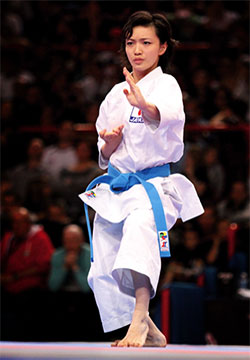
The cat stance, or ‘neko ashi dachi’ in Japanese, is one of the hardest stances in Karate.
It can often feel shaky, awkward and frail.
But once you master it…
Wow!
It’s one of the most impressive things in Karate.
A solid cat stance oozes of fierce beauty and deadly grace – just like a majestic leopard, ready to pounce on its pray.
How can you achieve this?
By following a simple formula:
Angle, Align & Adjust.
Check it out…
#1: Angle – 30 Degrees Out
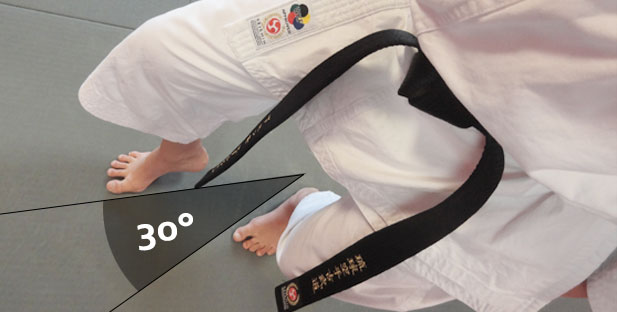
Let’s start with the first fix:
What angle is your back foot pointing at?
When I teach seminars in different dojos around the world, it seems everyone does it differently. Sometimes I see 45 degrees, sometimes I see 90 degrees.
But nobody seems to know exactly.
The answer?
30 degrees.
The angle of your back foot should not exceed 30 degrees of external rotation.
Why? Because that’s how the human body works best (in this stance).
More specifically, that’s how your hip stabilizes.
You see, the hip joint is a so called ball-and-socket joint, which means that muscular tension alone is not enough to make it firm. To make your cat stance stable, you need internal rotation in your back leg. This is due to a basic biomechanical principle.
- The more you open up your back leg, the weaker your cat stance becomes.
- The more you close your back leg, the stronger your cat stance becomes.
Easy, right?
“But Jesse-san, if I turn my back foot in, I lose balance!”
True.
That’s why you should angle your back foot 30 degrees (instead of 15 or 20, which would improve your hip stability even more, but make your balance much worse).
30 degrees is the optimal angle to achieve hip stability and balance.
But that’s just the first piece of the puzzle.
Next, let’s align your knee…
#2: Align – Knee & Foot
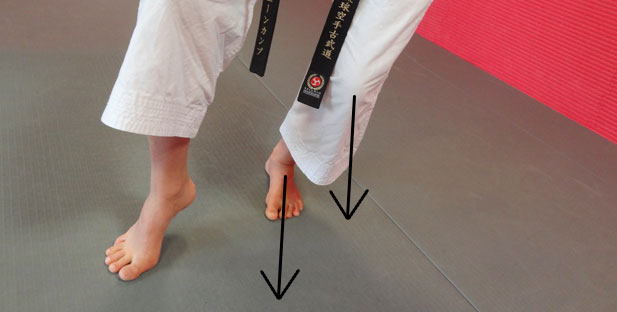
Your foot and knee go together like carrot cake and milk.
Flawlessly.
So, if your back foot is pointing in one direction but your knee is pointing in another direction, you’re headed for disaster – because that’s not how your body functions best.
The human knee is designed to go in the same direction as the foot.
This holds true for every stace, of course.
(That’s why I wrote this popular article: Warning: This #1 Karate Mistake Could Destroy Your Health Forever.)
If your knee and foot is not aligned, you might eventually experience pain.
If you then add speed, power or external load to the equation, a knee injury is destined to happen.
Don’t make that common mistake.
Strive to always align your knee with your foot.
This is especially important for women and girls, who have naturally greater joint flexibility than men. Their knees collapse to the sides more easily, which makes them more susceptible to ACL tears and joint health issues.
Always track your foot with your knee.
Finally, let’s adjust your weight…
#3: Adjust – Butt Behind Heel
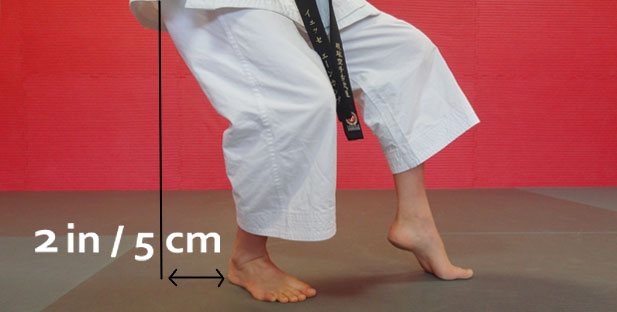
Imagine this:
Draw a vertical line from your butt to the floor.
Where did it end?
In a perfect cat stance, it should end 2 inches / 5 centimeters behind your back heel.
This means your main point of gravity, called ‘tanden’ in Japanese, is correctly aligned with your center line.
If you don’t adjust your weight to the back, you’ll have too much weight to the front.
That puts unhealthy stress on the wrong parts of your body, and might lead to dysfunctional overcompensation in your movements.
Your weight needs to be on your back leg.
However, it’s important that you achieve this the right way.
Don’t just stick your butt out. That will disrupt your structural integrity, and can lead to spinal disc herniation. (I know two people who this happened to already. Their x-rays are stuff of nightmares.)
Instead, try to maintain a straight spine and just shift your entire upper body back.
Your should feel your weight transfer to your back heel.
Now, draw a line down from your butt to the floor.
Is it 2 in / 5 cm behind your rear heel?
Then you know it’s adjusted.
_______
That’s it!
3 quick fixes to improve your cat stance.
- Angle your back foot 30 degrees out.
- Align your supporting knee and foot.
- Adjust your weight back, not forward.
Write this down somewhere!
There are other important details too, like ankle mobility and unilateral leg strength. But I already covered those in a recent episode of Karate Nerd Insider™, my weekly private video subscription club.
Question: What’s your biggest problem with stances in general?
Leave a comment & let me know.
Thanks!
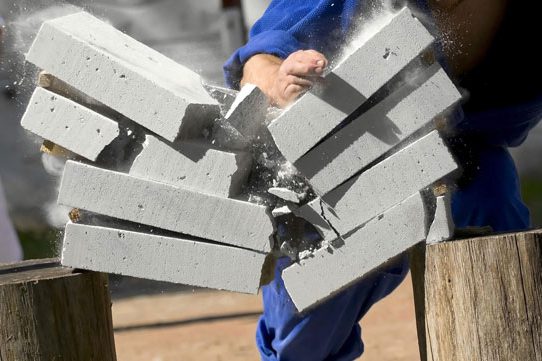
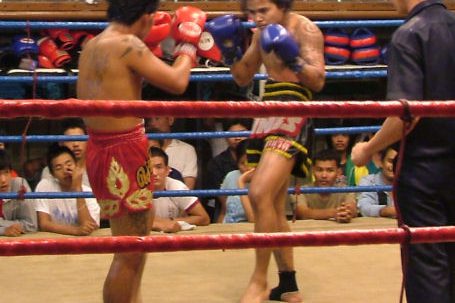
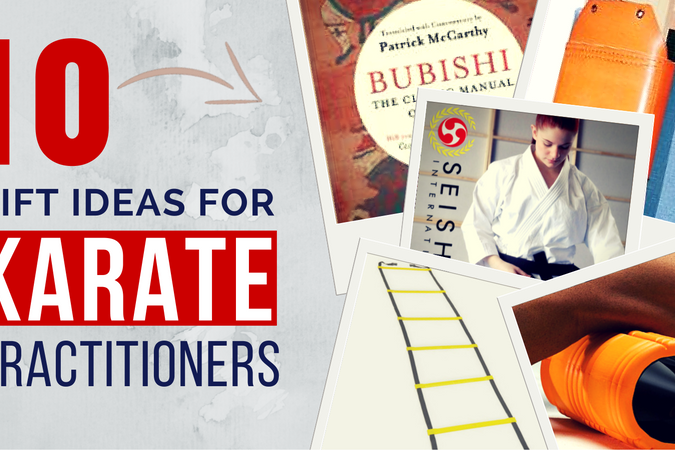
50 Comments